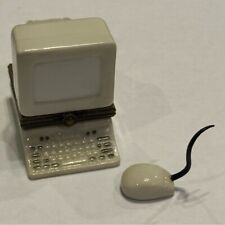![]()
Scientists from Princeton University have turned semiconductors into magnets, potentially opening the door for computer chips that can both calculate and store data. Traditionally, computers have used two different kinds of technology to calculate results and store data. While semiconductor chips do the calculating, data storage has generally been accomplished with magnetic materials used within disks or tapes. Combining these functions into a single device could substantially reduce the size and energy requirements of computer hardware.
To create the magnetic semiconductor, the researchers had to assemble it a single atom at a time. Their accomplishment marks the first time that scientists have achieved this degree of control over the atomic-level structure of a semiconductor. “Using the tip of a scanning tunneling microscope, we can take out a single atom from the base material and replace it with a single metal that gives the semiconductor its magnetic properties,” said research leader Ali Yazdani. “The ability to tailor semiconductors on the atomic scale is the holy grail of electronics, and this method may be the approach that is needed.”
The new technique may not only impact conventional chip-making, it could also lead to breakthroughs in quantum computing.
Gallium arsenide “doped” with manganese has long been recognized as a promising candidate for such dual-function chips, but working with the material has proven frustrating for a number of reasons. One difficulty is that researchers have not been able to engineer the material with optimal magnetic properties. “Up until now, we have not had a way to control how the manganese sits in the gallium arsenide substrate,” Yazdani said. “We could not specify, for example, how large the bits of manganese would be, or how far apart they would be located. For the most part, we had to just crystallize the material – with the dopant arranged more or less randomly – and hope.”
But co-researcher Dale Kitchen hit upon a solution while working with a scanning tunneling microscope. The device has a finely-pointed electrical probe that passes over a surface in order to detect variations with a weak electric field. The team, however, found that the charged tip could also be used to eject a single gallium atom from the surface, replacing it with one of manganese that was waiting nearby. “The important thing technically was that we could incorporate the manganese into the underlying crystal lattice,” Yazdani said. “If you want to study how the semiconductor functions, it would not have been enough merely to deposit the manganese on the surface. They needed to become a single integrated material.”
The new technique allowed the team to find the precise arrangements of manganese atoms that exhibited magnetic properties, the important factor in developing spin-based electronics. “Chips might take on many new capabilities once such ‘spintronic’ technology is perfected,” Yazdani said. “One thing we might be able to do is make chips that can both manipulate data and store it as well, which right now generally requires two separate parts of a computer working together.”
















Comments are closed.